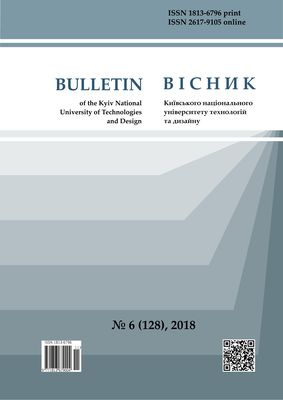CORRELATION BETWEEN ELECTROCHEMICAL PROPERTIES OF THE WELDED JOINT OF ALUMINIUM ALLOY OF THE AL-MG-CU-SI SYSTEM AND ITS RESISTANCE TO LOCAL CORROSION
DOI:
https://doi.org/10.30857/1813-6796.2018.6.8Keywords:
aluminum alloy of the Al-Mg-Cu-Si alloying system, welded joint, electrochemical properties, intergranular corrosionAbstract
The study of the correlation between the electrochemical properties of a welded joint of an aluminum alloy of the Al-Mg-Cu-Si alloying system and its resistance against local corrosion. The technique. Potentiometry, polarization curves techniques, accelerated tests of resistance against intergranular corrosion according to GOST 9.913 were used. The measuring equipment analytical VRRL 200 scales, potentiostat PI-50.1 was applied. Electrochemical properties in a solution of 3% NaCl of a welded joint of an aluminum alloy of the Al-Mg-Cu-Si alloying system obtained by a free arc were studied, its resistance against intergranular corrosion was evaluated. In accordance with the results of electrochemical studies it have established that
the potential of the weld and the heat-affected zone are more noble in comparison with the base metal. Taking into account the larger area of the base metal in the structure in compare to the weld (the weld area is no more than 10% of the base metal area), in general, satisfactory resistance of the welded joint to uniform corrosion can be expected. The maximum depth of intergranular corrosion of the heat-affected zone of the welded joint of the Al-Mg-Cu-Si alloy is about 0.350 µm, which is more than the depth of intergranular corrosion for the base metal — about 0.086 µm. The increasing of the depth of breaking down of grain boundaries in a welded joint confirms the fact of the softening of the heat-affected zone during welding. Scientific novelty. A correlation between the electrochemical characteristics of the welded joint of an aluminum alloy of the Al-Mg-Cu-Si alloying system obtained by a free arc, in particular, the corrosion potential and the anodic dissolution current in the active potential region and resistance against to intergranular corrosion was established. It is shown that an increasing of the depth of intergranular corrosion of the heat-affected zone correlates with the large currents of the anodic dissolution of this zone. Practical significance. It has been established that the thermal welding cycle promotes the weakening of the heat-affected zone of the welded joint of an aluminum alloy of the Al-Mg-Cu-Si alloying system, obtained by a free arc. It leads to a decreasing of the resistance against intergranular corrosion.

